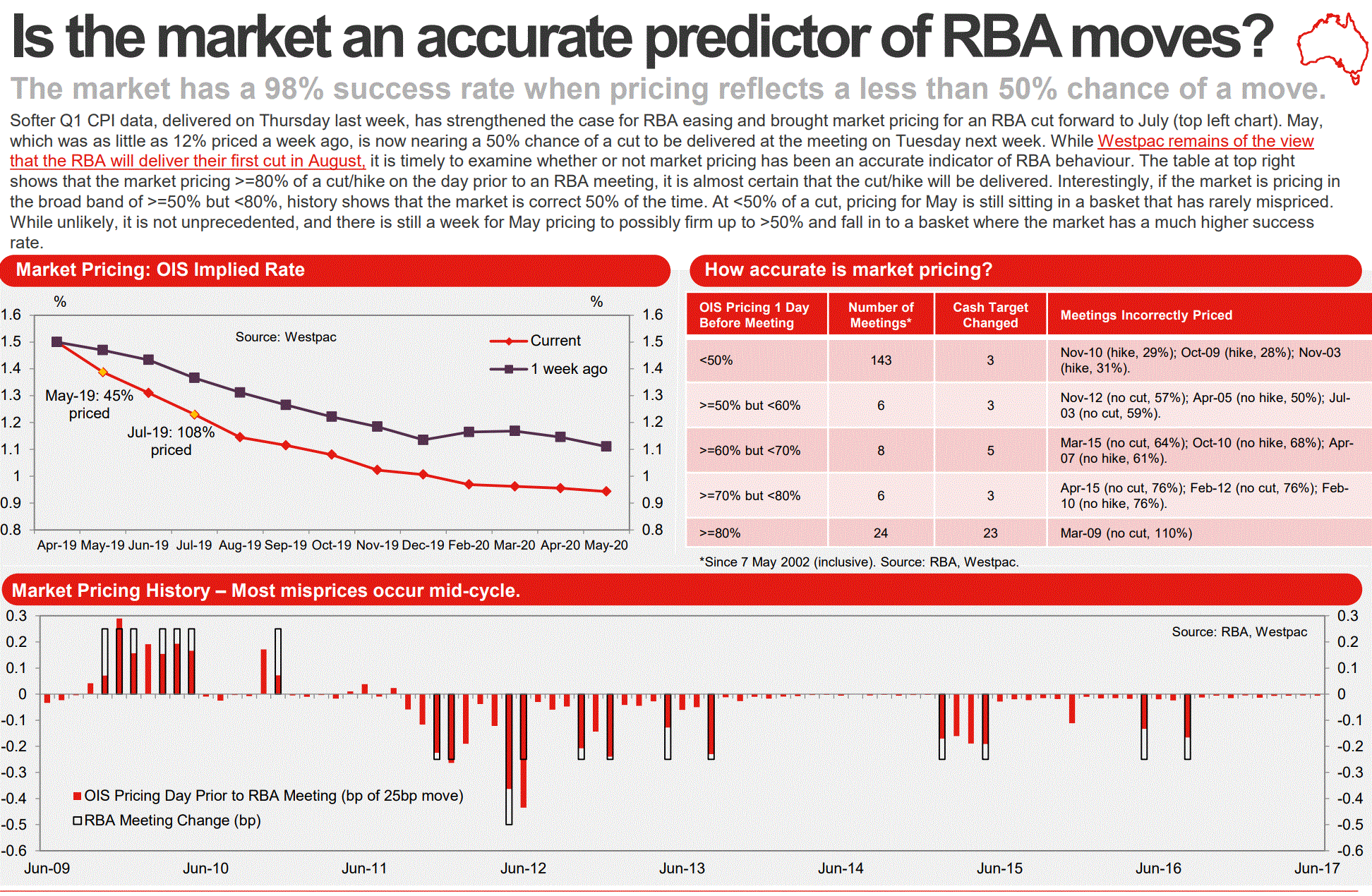From Chris Joye late yesterday:
Industry participants believe the central bank and banking regulator are considering a targeted alternative to a cut to the official cash rate, which would involve lowering the minimum 7.25 per cent interest rate banks use when assessing a home loan borrower’s repayment capacity by 50 basis points to 6.75 per cent.
All things equal this would lift mortgage borrowing capacity by roughly 7% and bring in a few new marginal borrowers. It’s unlikely to do much to stimulate wider housing demand given the general public wouldn’t even know what it meant. In effect, it would be an attempt to over-gear a few more patsies sufficient to stabilise house prices without sending the market mad.
The macro arguments put by Chris (and presumably by banks to regulators) in favour of the move are very thin:
- …the federal budget is now in surplus on all key measures and there are good grounds for policymakers to assume that fiscal rather than monetary policy is better placed to provide any extra stimulus…the budget will likely continue to deliver larger surpluses than are presently expected [on commodity prices].
- …global growth will rebound after a period where it has been stymied by tariffs and the trade impasse between the world’s two largest economies.
- …if the RBA cuts its cash rate further below the current record 1.5 per cent low, it will fundamentally undermine deposit-takers’ net interest margins, which could threaten financial stability…
- …there is an argument that the RBA should preserve its monetary policy ammunition [for] a long overdue recession.
My response:
- There is no particular argument favouring fiscal over monetary at this point. Both are counter-cyclical tools. The Budget is being floated by TEMPORARY commodity prices that are the result of a number serendipitous supply side accidents. Prices are peaking now and will steadily fall from here for years as China’s structural slowdown intensifies through the 2020s. The lucky commodity price lift is, in fact, back-filling massive misses on revenue projections from domestic sources (such as wages) that will manifest with a vengeance the moment the terms of trade fall again. Do we really want to build in an even larger structural deficit than we already have? See Scummo’s $40bn (2% of GDP) black hole on projected tax cuts.
- Whether global growth is about to rebound is irrelevant. Commodity prices are going to fall as China slows structurally and supply lifts.
- Bank NIMs are under pressure whatever happens from here. Rate cuts give them an opportunity to pad them out. The RBA will stop at 50bps to preserve margin anyway.
- What does 100bps of RBA ammo do for an economy in recession? In reality banks will still take half. So the answer is next-to-nothing.
What Chris does not canvas is that there are also big downsides to any APRA cut.
The “industry participants” Chris mentions are certain to be banks. And they know what they’re doing. They want the levers of monetary policy shifted into the shadows where they can bully APRA to their heart’s content. It may only begin with a 7% lift in borrower capacity, but then comes another, and another, and another and suddenly its 28% and the bubble is blowing up again.
There are other problems too. That this could even be proposed by banks two months out from the Hayne Royal Commission, which exposed massive lending standards fraud, is extraordinary enough. But for humiliated regulators to mull cutting lending standards themselves so soon is a values statement floating somewhere out near the Kuiper Belt. After all, sister regulator, ASIC, is still in court suing the banks for predatory lending around failed lending standards. I mean, come on.
Moreover, monetary policy is not just about house prices. It is about the entire economy. Rate cuts will boost housing demand but so long as APRA policy remains firm prices can’t run away. We’ll see price stabilisation which, combined with lower servicing costs, will lift household consumption.
As well, MB argued for macroprudential from 2011 because it would enable the RBA to cut rates without misallocating credit and that, in turn, would sink the Australian dollar, triggering a growth spurt in the 40% of the economy that is tradable.
Now, forex, interest rate and bond markets are all primed for rate cuts, via Westpac:

If the RBA refuses and APRA cuts then the Australian dollar will immediately run with the terms of trade over the negative interest rate spread and go straight up. Markets are also pricing US rate cuts by year end. If the Fed cuts and commodity prices remain high then the upwards AUD move will be violent, delivering net damage to the economy and inflation.
And those are only the cyclical issues. Then there’s the structural. We know households are tapped out. We know China and commodity prices are on their last gasp. The public purse will be smashed by the latter in due course. The only thing left to grow the Aussie economy is non-mining tradables and they need a much lower real exchange rate to do it. An APRA cut will delay that while an RBA cut accelerate it.
In short, APRA cuts will hurt the economy, intensify regulatory capture, encourage bank corruption and embed Australian secular stagnation. RBA cuts will support the economy, keep APRA standards intact where the Hayne RC very clearly stated that they should be, as well as help push Australia into a higher growth trajectory through secular stagnation.
The choice is obvious.

